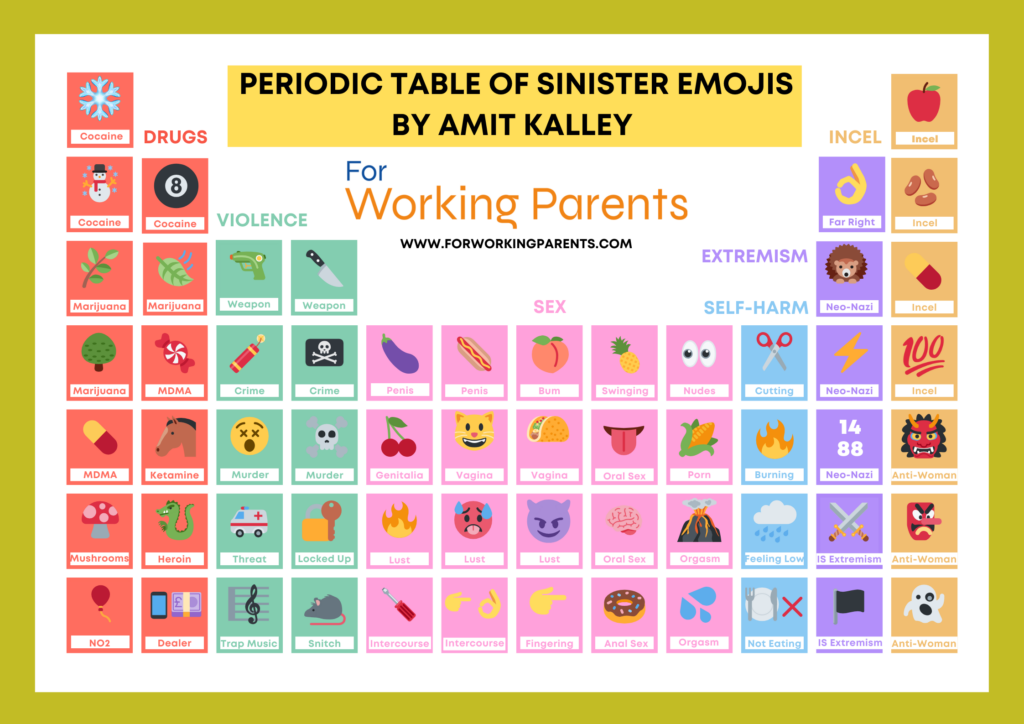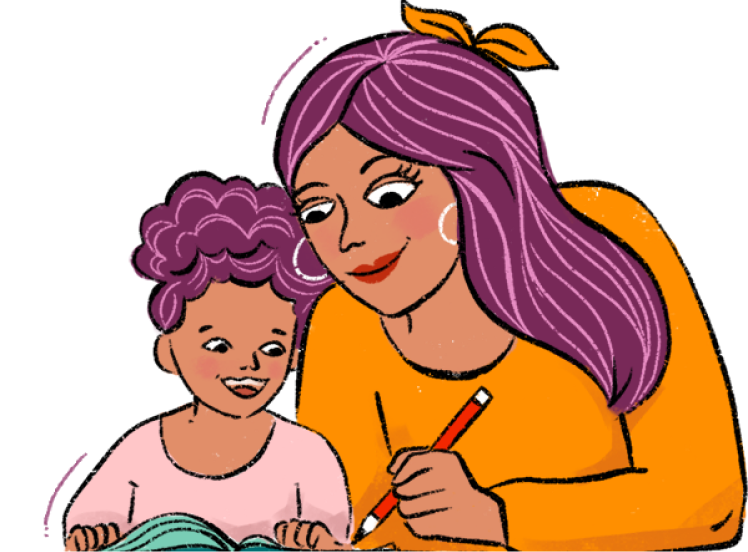
I'm not gonna lie: When I first saw that someone had created a "Periodic Table of Sinister Emojis" being used by kids, I thought it was just another way to get clicks by feeding on parents' paranoia. After all, kids using emojis to send coded messages is a hot topic at the moment because of the attention it is getting via the Netflix show Adolescence.
Still, I try to be openminded so I had to take a look before making up my mind on whether this emoji translator table was just clickbait or actually something useful. Turns out the table created by Amit Kalley, a former deputy head teacher—that's what they call assistant principals in the UK—is definitely a useful resource for parents whether they watch Adolescence or not. I also think it's an extremely useful guide for Latino parents—or any other parents whose first language may not be English—who in addition to having to decode slang that is not in their first language, now also have to decode nuanced emojis.

It's true that sometimes an emoji is just an emoji and kids of all ages like to use them, but it's good to know which ones can be used to mean something "sinister" in case you happen to see them on your child's phone with seemingly no context.
Amit, who is the founder of For Working Parents, does not claim that the table he created is comprehensive. "It's far from an exhaustive list, but it's based on common emojis used to say something very different to what you'd think," he wrote on Instagram.
His table features 60 emojis listed alongside their coded meanings. For organizational purposes, the table is divided into different categories: drugs, violence, sex, self-harm, extremism, and incel.
Before we get into the table, let's discuss the meaning of incel.
For reference, the Anti-Defamation League defines incels as:
- Incels are heterosexual men who blame women and society for their lack of romantic success.
- A subset of the online misogynist "manosphere" that includes Pick Up Artists and Men's Rights Activists, incels are known for their deep-seated pessimism and profound sense of grievance against women.
- The incel ideology is rooted in the belief that women have too much power in the sexual/romantic sphere and ruin incels' lives by rejecting them.
- Incels are the most violent sector of the manosphere, and have perpetrated a range of deadly attacks against women.
Now, let's take a look at the emoji table and break it down a bit.

I mean, some of this stuff is obvious. Like surely most of us know that a "🍑" is code for pompis or that an "🍆" is code for a dangling body part on some. But did you know that drugs can be referenced by using any of the following emojis?

I, for one, did not know that a balloon could be used as code for nitrous oxide. I mean, now that I know, it makes perfect sense, but there's no way I would have made that jump on my own. I've been to too many kids' parties to look at a balloon emoji as anything other than a wholesome reference to a celebration.
OK, but what are parents supposed to do with this information other than panic?
People often ask Amit how to talk to teenagers about the online world and he has some practical and useful tips. For example, he shared the following advice on IG:
💬 Ask open, curious questions (without judgment):
✨ What's the most popular app in your year group right now?
✨ Have you ever seen someone get "cancelled" or called out online?
✨ Are there any trends or emojis people are using that feel confusing or worrying?He also suggests creating what he calls a "no judgment zone." By letting your child know that if something that is strange or makes them feel uncomfortable online happens, you are there to help, "not overreact or punish." The idea being that you are "a guide, not a spy."
One of the most important things he brings up, IMO, is that you shouldn't wait until for a crisis to have these kinds of conversations about online safety. "Trending topics, viral challenges, or school drama are all perfect springboards for low-pressure chats," says Amit.
And what kinds of online issues should you be discussing with your kids?
Amit suggests:
"🧠 Talk about pressure, comparison, and online identity:
📱 Body image and filters
💔 Relationship pressures and sexting
🕹️ Gaming and toxic chat
📈 Social status and followers"
In closing, I want to remind you to think of online safety as an ongoing conversation.
It's extremely important to remember that these types of conversations are not a one-and-done kind of thing. "Emojis and acronyms change, so parents have to keep researching and keep asking the right questions. We need to normalize conversations about the online world with our children," Amit told The Telegraph. I wholeheartedly agree!




